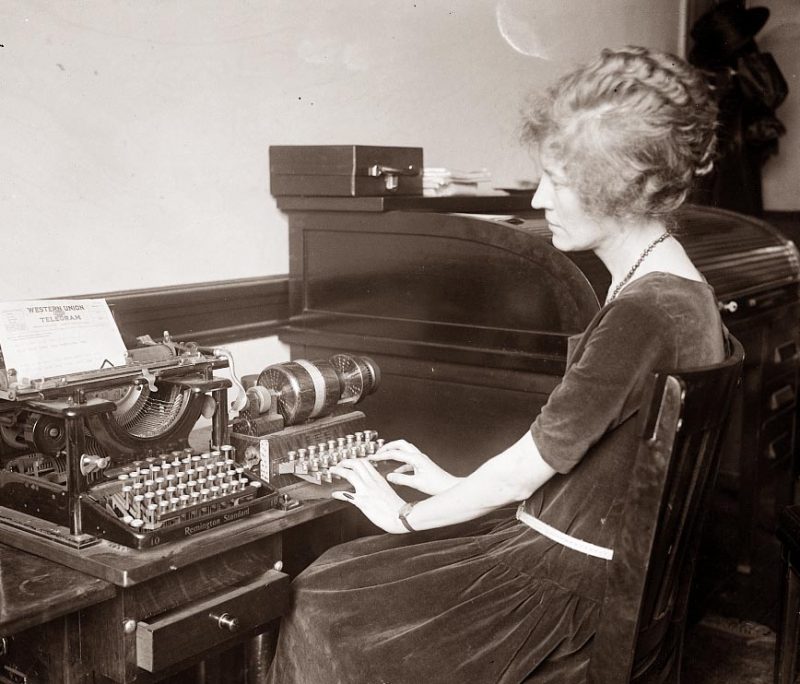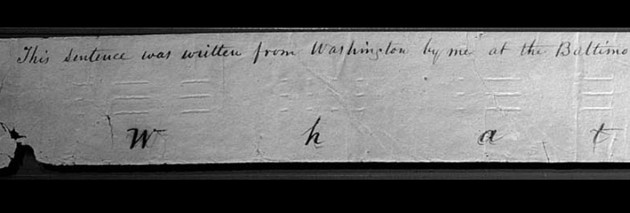Although telegrams are something from our past, one young woman has decided to take it into her own hands to try to send a telegram in 2016. Throughout her childhood, she grew up with cassette tapes, fax machines, and long-distance calling; those things were considered advanced technology at the time. However, that technology was soon replaced by the CD, emails, and cell phones. From there, those things were eventually replaced with MP3 players, chat rooms, and smartphones. Pretty soon, those things will be replaced as well – it’s an endless cycle of constant technological advances.
One thing this woman really wanted was to experience sending a telegram. The telegram was a major step into the future at its prime. It definitely beat out sending letters by pony or by boat. However, the telegram was eventually replaced with the first telephone, making the telegram system unneeded.
Once the young woman began thinking of sending or even receiving a telegram, she realized that she has never taken a daguerreotype, or asked one of the switchboard operators to connect her to a phone number, or even started up a Victrola for some music on the phonograph.
It’s safe to say that all of these inventions are nearly obsolete. The younger generations today do not even know what these machines do or why they were important. Without these inventive advances in the 1800’s and 1900’s, who knows where technology would be today?

The crazy thing is that the woman could have actually sent a telegraph if she had wished when she was younger. However, she did not find any excitement in sending one until it was too late. Western Union had closed its service nearly a decade ago. The last ten telegrams that were sent were birthday wishes, death condolences, emergency notifications, and messages from people who knew they were going to be the last ones to send a telegram.
Today, even if someone wanted to try to send a telegram in the United States, it is most likely cumbersome. Yesterday, the telegram changed many people’s lives; it even helped branch out newspapers and radio news channels. Communication could travel faster through a telegram than through the fastest means of transportation. One newspaper in New York in 1844 had claimed there was nothing left for inventors to achieve.
While more than half of the United States concurred that the telegram was a magnificent invention, there were some who thought it was not all what, it was hyped up to be. One reporter from a different New York newspaper had called the telegram “trivial and paltry” in 1858. The newspaper also called it “superficial, sudden, un-sifted, too fast for the truth.” This newspaper believed that any information that came from the telegram meant that it was most likely lies or distorted truth. Many reporters did not trust the telegram. A writer and cultural critic had mentioned in 1903 that the transatlantic telegraph was a “great rope with Philistine at each end of it talking in utilities.”

After the telegram was invented, people used it so much they began to take it for granted. People worldwide knew what a telegraph was and it’s capabilities. One of the earliest electric telegraph systems had included numbered needles on a board. When a transmission came in, it pointed to the corresponding letters of the alphabet. Another device was invented for along Britain’s Great Western Railway; it eventually became the first commercial telegraph in the world in 1838.
Many people recognize this type of telegraph system – Morse Code. Samuel Morse had set the United States’ standard when the new code was developed. Morse’s system transmitted electric signals that were then interpreted and handwritten by the human sitting next to the receiver. By the 1850’s, a system was created that could automatically print telegrams. However, humans were still required to help send the message first. In the 1930’s, that part was finally automated, and humans were no longer needed.
The woman decided to test out this so-called telegram. Ironically, she first went to the Internet to see where and how she could send one. She first found a website called iTelegram and learned it would cost almost $20 to send one. It would take three to five business days to deliver a message to Washington, D.C. The company on the website says that it actually runs some of the old telegraph networks like Western Union. The people on the website also play up the idea of sending one, like sending a telegraph to a loved one on their wedding day as a keepsake.
The woman splurged and spent the $20, but after three weeks the telegram still didn’t arrive in Washington, D.C.!